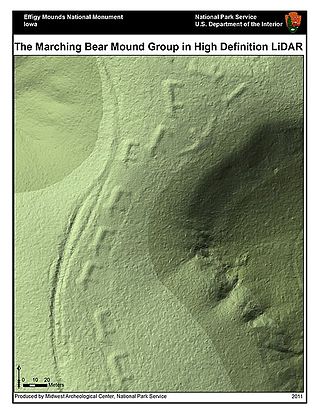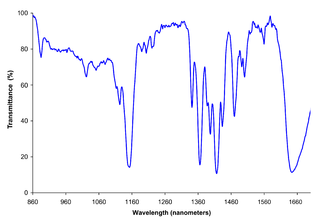
Lidar is an acronym of "light detection and ranging" or "laser imaging, detection, and ranging". It is a method for determining ranges by targeting an object or a surface with a laser and measuring the time for the reflected light to return to the receiver. It is sometimes called 3-D laser scanning, a special combination of 3-D scanning and laser scanning. LIDAR has terrestrial, airborne, and mobile applications.

Holography is a technique that enables a wavefront to be recorded and later re-constructed. Holography is best known as a method of generating real three-dimensional images, but it also has a wide range of other applications. In principle, it is possible to make a hologram for any type of wave.

Canon Inc. is a Japanese multinational corporation headquartered in Ōta, Tokyo, specializing in optical, imaging, and industrial products, such as lenses, cameras, medical equipment, scanners, printers, and semiconductor manufacturing equipment.

Konica Minolta, Inc. is a Japanese multinational technology company headquartered in Marunouchi, Chiyoda, Tokyo, with offices in 49 countries worldwide. The company manufactures business and industrial imaging products, including copiers, laser printers, multi-functional peripherals (MFPs) and digital print systems for the production printing market. Konica Minolta's Managed Print Service (MPS) is called Optimised Print Services. The company also makes optical devices, including lenses and LCD film; medical and graphic imaging products, such as X-ray image processing systems, colour proofing systems, and X-ray film; photometers, 3-D digitizers, and other sensing products; and textile printers. It once had camera and photo operations inherited from Konica and Minolta but they were sold in 2006 to Sony, with Sony's Alpha series being the successor SLR division brand.
Liquid crystal on silicon is a miniaturized reflective active-matrix liquid-crystal display or "microdisplay" using a liquid crystal layer on top of a silicon backplane. It is also referred to as a spatial light modulator. LCoS was initially developed for projection televisions but is now used for wavelength selective switching, structured illumination, near-eye displays and optical pulse shaping. By way of comparison, some LCD projectors use transmissive LCD, allowing light to pass through the liquid crystal.

A spatial light modulator (SLM) is an object that imposes some form of spatially varying modulation on a beam of light. A simple example is an overhead projector transparency. Usually when the term SLM is used, it means that the transparency can be controlled by a computer. In the 1980s, large SLMs were placed on overhead projectors to project computer monitor contents to the screen. Since then, more modern projectors have been developed where the SLM is built inside the projector. These are commonly used in meetings for presentations.

Near-infrared spectroscopy (NIRS) is a spectroscopic method that uses the near-infrared region of the electromagnetic spectrum. Typical applications include medical and physiological diagnostics and research including blood sugar, pulse oximetry, functional neuroimaging, sports medicine, elite sports training, ergonomics, rehabilitation, neonatal research, brain computer interface, urology, and neurology. There are also applications in other areas as well such as pharmaceutical, food and agrochemical quality control, atmospheric chemistry, combustion research and knowledge

A handheld projector is an image projector in a handheld device. It was developed as a computer display device for compact portable devices such as mobile phones, personal digital assistants, and digital cameras, which have sufficient storage capacity to handle presentation materials but are too small to accommodate a display screen that an audience can see easily. Handheld projectors involve miniaturized hardware, and software that can project digital images onto a nearby viewing surface.

Fiber-optic communication is a method of transmitting information from one place to another by sending pulses of infrared light through an optical fiber. The light is a form of carrier wave that is modulated to carry information. Fiber is preferred over electrical cabling when high bandwidth, long distance, or immunity to electromagnetic interference is required. This type of communication can transmit voice, video, and telemetry through local area networks or across long distances.
Laser color television, or laser color video display, is a type of television that utilizes two or more individually modulated optical (laser) rays of different colors to produce a combined spot that is scanned and projected across the image plane by a polygon-mirror system or less effectively by optoelectronic means to produce a color-television display. The systems work either by scanning the entire picture a dot at a time and modulating the laser directly at high frequency, much like the electron beams in a cathode ray tube, or by optically spreading and then modulating the laser and scanning a line at a time, the line itself being modulated in much the same way as with digital light processing (DLP).

IPG Photonics is an American manufacturer of fiber lasers. IPG Photonics developed and commercialized optical fiber lasers, which are used in a variety of applications including materials processing, medical applications and telecommunications. IPG has manufacturing facilities in the United States, Germany, Russia and Italy.
Ophir Optronics Solutions is a multinational company that sells optronics solutions. The company develops, manufactures and markets infrared (IR) optics and laser measurement equipment. Founded in 1976, the company was traded on the Tel Aviv Stock Exchange from 1991 until it was acquired, and was a constituent of its Tel-tech index. Headquartered in the Har Hotzvim industrial park in Jerusalem, Israel Ophir owns a 100,000-square-foot (9,300 m2) complex that includes the group's main production plant. Ophir has additional production plants in North Andover, Massachusetts and Logan, Utah in the US and sales offices in the US, Japan and Europe. In 2006, Ophir acquired Spiricon Group, a US-based company in the beam-profiling market. Ophir's sales increased sharply from $45 million in 2005 to $74 million in 2007. During 2007, Ophir established a Swiss-based subsidiary to market lenses and components for surveillance and imaging systems in Europe. In May 2010, Ophir acquired Photon Inc., another US-based beam-profiling company. Newport Corporation, a global supplier in photonics solutions, completed its acquisition of the Ophir company in October 2011. In 2016, metrology firm MKS Instruments bought Newport Corporation, including the Ophir brand, for $980 million.
Particle size analysis, particle size measurement, or simply particle sizing, is the collective name of the technical procedures, or laboratory techniques which determines the size range, and/or the average, or mean size of the particles in a powder or liquid sample.
Optical sorting is the automated process of sorting solid products using cameras and/or lasers.

LIA - The Laser Institute is an international professional society with a focus on laser applications and laser safety. LIA was founded on February 7, 1968, as the Laser Industry Association, and acts as secretariat to the Accredited Standards Committee (ASC) Z136, which develops and maintains the Z136 series of laser safety standards. LIA is publisher of these American National Standards Institute (ANSI) Z136 laser safety standards, which provide the foundation of laser safety programs nationally.
Terahertz nondestructive evaluation pertains to devices, and techniques of analysis occurring in the terahertz domain of electromagnetic radiation. These devices and techniques evaluate the properties of a material, component or system without causing damage.
Thorlabs, Inc. is an American privately held optical equipment company headquartered in Newton, New Jersey. The company was founded in 1989 by Alex Cable, who serves as its current president and CEO. As of 2018, Thorlabs has annual sales of approximately $500 million. Outside its multiple locations in the United States, the company has offices in Brazil, Canada, China, France, Germany, Japan, Sweden, and the United Kingdom. It sells approximately 20,000 different products.
Coherent, Inc., headquartered in Santa Clara, California is an American company that develops, manufactures and supports laser equipment and related specialty components. Coherent was founded in May 1966 by physicist James Hobart and five cofounders. It went public in 1970. Over time, Coherent acquired other laser businesses and expanded to lasers for different industries and applications. From 2004 to 2021, it grew from $400 million to almost $2 billion in revenues, in part through a series of acquisitions. In 2022, II-VI Incorporated acquired Coherent, Inc. and took the name Coherent Corp.

Jürgen W. Czarske is a German electrical engineer and a measurement system technician. He is the director of the TU Dresden Biomedical Computational Laser Systems competence center and a co-opted professor of physics.











